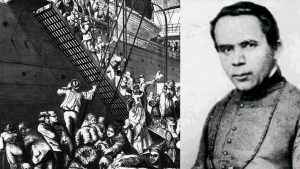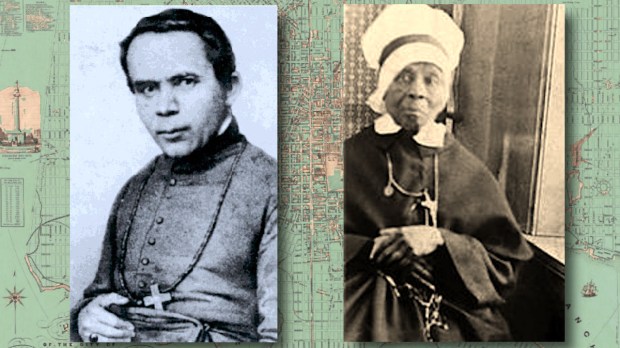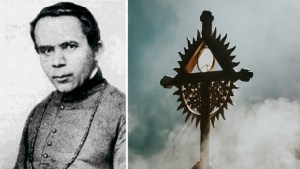When you hear it’s the feast of St. John Neumann, you might be a little confused, because it’s not the feast of thatSt. John Newman.
Isn’t it funny there are two saints with the same name, who lived at the same time and are both famous for their work in education? What are the odds!
But it’s the younger of the two (by only 10 years!) whom we’re focusing on today. St. John Neumann lived and worked in the United States for all of his priestly ministry after emigrating there from Bohemia in his twenties. He founded the first diocesan school system as bishop of Philadelphia.
(The other, St. John Henry Newman, was British, was not a bishop, and never set foot in the United States—in case that helps you keep them straight!)
Although St. John Neumann was not born in the U.S., he is the only male American citizen to be canonized a saint, which honestly surprised me. Fittingly, among the good deeds of his life, many have a distinctly American sensibility.
Here is the story of how an unexpected friendship between Neumann and a religious superior saved a groundbreaking and vital religious community.
The Oblate Sisters of Providence
The story begins with Venerable Mary Elizabeth Lange, OSP, who was born enslaved in 1789 Haiti. She fled with her family to Cuba after the Haitian Revolution and received an excellent education there before eventually coming to live in the United States, where she opened a school for Black children in Baltimore with her friend Marie Balas.
Lange and Balas longed to offer their lives to God as religious sisters, but many religious communities of the time did not accept women of color. Providentially, Lange met Sulpician Father James Joubert, who was working to instruct Black children in religious education and saw a great need for a religious order who would teach Black children.
Together, Lange and Joubert decided to start such an institution, and thus the Oblate Sisters of Providence began in 1829. The early members included Lange, Balas, and two other women: Rosanne Boegue and Almaide Duchemin. It is amazing to realize that this Catholic religious order of sisters of color began more than 30 years before the Civil War.
Opposition and hardships
Sadly, the Oblate Sisters were to face poverty, racism, and untold hardships in their early years, and some of the injustice came from inside the Church itself. Father Joubert died unexpectedly in 1843, leaving the sisters in a precarious position:
The [then] present archbishop, Samuel Eccleston, had no use for religious of color. He forbade the sisters to receive new candidates, and to add insult to injury, Archbishop Eccleston suggested that the order disband, and the sisters return to the world. He also suggested that the sisters, since they were educated, could find employment in the better households of Maryland.
It was a crisis for the fledgling religious order, and it was in this tenuous moment that a new saintly friendship came to the rescue.
Fr. Neumann, parish priest
St. John Neumann, not yet a bishop but a parish priest at that time, noticed the Oblate Sisters in church and offered to help them whenever possible. This friendship between two holy people, Venerable Mary Elizabeth Lange, OSP, and St. John Neumann, proved decisive to the future of the order.
Neumann supported their work and connected them with a new spiritual director for their order, Thaddeus Anwander, who was a young member of his own religious order, the Redemptorists. Anwander dedicated himself to the sisters’ success:
When Father Anwander asked permission of Archbishop Eccleston to [be their spiritual director], the archbishop replied, “Of what good?” Father Anwander, on his knees, continually begged this permission and in the end, Archbishop Eccleston yielded.
“Providence is greater …”
As the Oblate Sisters’ history attests, “Providence is greater than the voice of any prelate. The sisters opted not to disband and celebrate their 180th anniversary this year.”
Their story can encourage us with their perseverance and fortitude in the face of many obstacles. And perhaps most instructive is noticing how these saintly people worked together and helped each other.
It is rare to find a saint alone, without any other saintly people around them in their lives. Saints tend to come in groups, as “iron sharpens iron” and the goodness of each one inspires the others in their own pursuit of holiness.
This saintly friendship saved the future of a religious order doing vital work, and today it can continue to inspire us to seek holiness alongside our own friends and loved ones.



